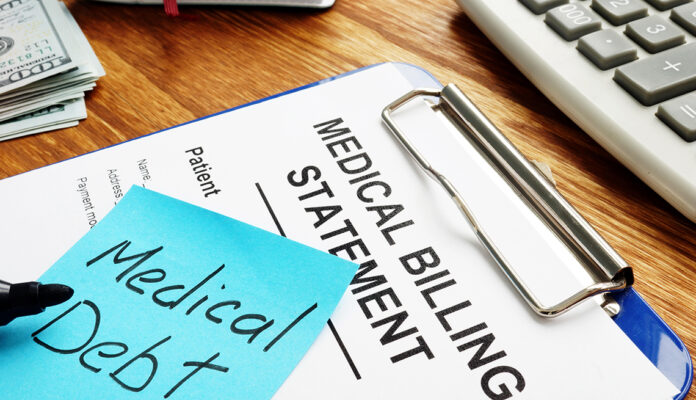Medical debt can significantly burden individuals and families, impacting their financial well-being and overall quality of life. However, there are proactive steps you can take to pay off your medical debt and regain control of your finances.
This guide will explore five practical strategies to help you tackle medical debt and find relief. By implementing these approaches, you can take meaningful steps toward resolving your medical debt and find some financial relief.
1. Create a Budget and Track Your Expenses
When facing medical debt, it’s crucial to establish a budget and closely monitor your expenses. Start by listing all your income sources and categorizing your expenses. Identify areas where you can reduce discretionary spending to allocate more funds toward paying off your medical debt. You might be surprised at how much money you can free up once you see exactly where it goes each month.
Budgeting doesn’t need to be a complicated exercise. Use budgeting tools or apps that make tracking your expenses and staying organized easier. By having a clear picture of your financial situation, you can identify opportunities to cut costs and allocate more resources toward debt repayment.
2. Negotiate with Healthcare Providers
Don’t hesitate to contact your healthcare providers and discuss your medical debt situation. Many providers are willing to negotiate medical bill assistance in the form of payment plans or bill discounts, especially if you’re facing financial hardship.
Explain your circumstances, provide any relevant documentation such as income statements or proof of financial need, and inquire about available options for reducing your medical debt. Some providers may offer you discounts for prompt payment or provide financial assistance programs you may qualify for. Negotiating with your healthcare providers can lead to more manageable payment terms and a reduced debt burden.
3. Check Out Financial Assistance Programs
Various financial assistance programs are available to help individuals struggling with medical debt. Start by contacting your healthcare provider’s financial assistance department or patient advocate to inquire about any programs they offer.
Additionally, you can research government-sponsored local, state, and federal programs that provide medical debt relief or subsidies. Non-profit organizations and foundations may also provide grants or assistance specifically for medical debt. Take the time to explore these programs thoroughly, as they can provide significant relief and potentially reduce or eliminate your medical debt burden.
4. Negotiate with Collection Agencies
If your medical debt has been transferred to a collection agency, engaging in negotiation is essential to potentially reduce the amount owed. Start by requesting a debt validation letter to ensure the accuracy of the debt and verify that the collection agency has the legal right to collect it. Once you have verified the debt, contact the collection agency and explain your financial situation.
Prepare yourself for dealing with a person who negotiates all day long, and continue to stand your ground if they try bullying or other negative tactics. You can negotiate a settlement for a reduced amount or set up a payment plan that fits your budget. Be prepared to provide documentation of your financial hardship and discuss options for debt reduction or forgiveness.
5. Consider Debt Consolidation or Settlement
Debt consolidation or settlement can be viable options for managing medical debt. Debt consolidation involves combining multiple debts into a single loan or credit account, simplifying your payments and potentially reducing interest rates. Research debt consolidation options such as personal loans or balance transfer credit cards and compare their terms and interest rates.
Debt settlement, on the other hand, involves negotiating with creditors or collection agencies to settle the debt for a reduced amount. This option typically requires a lump-sum payment, so consider it if you have access to a significant sum of money or can save up over time. Ask how this option will impact your credit score and how long it might take to offset any adverse effects.
You Have Options
Dealing with medical debt can be challenging, but taking action and exploring various strategies to pay it off is essential. Creating a budget, negotiating with healthcare providers and collection agencies, exploring financial assistance programs, and considering debt consolidation or settlement are all viable options to alleviate the burden of medical debt.
Remember to stay proactive, communicate with the relevant parties, and seek professional advice if needed. You can achieve financial stability and peace of mind by taking control of your medical debt and implementing these strategies


















